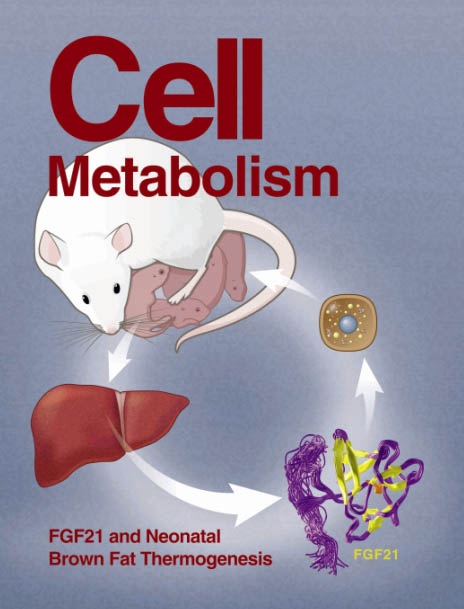Semaglutide effects on energy balance are mediated by Adcyap1+ neurons in the dorsal vagal complex
IF 30.9
1区 生物学
Q1 CELL BIOLOGY
引用次数: 0
Abstract
The use of the GLP-1R agonist semaglutide is revolutionizing the treatment of obesity, yet its mechanistic effects on energy balance remain elusive. Here, we demonstrate that reactivation of semaglutide-responsive dorsal vagal complex neurons mimics the drug’s effects of reducing food intake and body weight and promoting fat utilization and conditioned taste aversion. We observe that many of the semaglutide-activated area postrema (AP) and nucleus of the solitary tract (NTS) neurons express Adcyap1 mRNA, and ablation of AP/NTS Adcyap1+ neurons largely reverses semaglutide’s effects on energy balance acutely in lean mice and in subchronically treated obese mice. Semaglutide-activated AP/NTS Adcyap1+ neurons promote the loss of fat rather than lean mass, with only a modest effect on conditioned taste aversion. Furthermore, NTS Adcyap1+ neurons are engaged by GLP-1R-expressing AP neurons and are necessary for semaglutide-induced activation of several downstream satiety-related structures. Selective targeting of semaglutide-responsive Adcyap1+ neurons holds potential for improved future anti-obesity treatments.

半马鲁肽对能量平衡的影响是由迷走背复合体中的Adcyap1+神经元介导的
GLP-1R激动剂semaglutide的使用正在彻底改变肥胖的治疗,但其对能量平衡的机制影响仍然难以捉摸。在这里,我们证明了对semaglu肽反应的背迷走神经复合体神经元的再激活模拟了药物减少食物摄入和体重、促进脂肪利用和条件性味觉厌恶的作用。我们观察到,在瘦子小鼠和亚慢性治疗的肥胖小鼠中,许多塞马鲁肽活化区后足区(AP)和孤立束核(NTS)神经元表达Adcyap1 mRNA, AP/NTS Adcyap1+神经元的消融在很大程度上逆转了塞马鲁肽对能量平衡的影响。semaglu肽激活的AP/NTS Adcyap1+神经元促进脂肪而不是瘦质量的减少,对条件性味觉厌恶只有适度的影响。此外,NTS Adcyap1+神经元被表达glp - 1r的AP神经元参与,并且对于semaglu肽诱导的几种下游饱腹感相关结构的激活是必需的。选择性靶向semaglutide-responsive Adcyap1+神经元具有改善未来抗肥胖治疗的潜力。
本文章由计算机程序翻译,如有差异,请以英文原文为准。
求助全文
约1分钟内获得全文
求助全文
来源期刊

Cell metabolism
生物-内分泌学与代谢
CiteScore
48.60
自引率
1.40%
发文量
173
审稿时长
2.5 months
期刊介绍:
Cell Metabolism is a top research journal established in 2005 that focuses on publishing original and impactful papers in the field of metabolic research.It covers a wide range of topics including diabetes, obesity, cardiovascular biology, aging and stress responses, circadian biology, and many others.
Cell Metabolism aims to contribute to the advancement of metabolic research by providing a platform for the publication and dissemination of high-quality research and thought-provoking articles.
 求助内容:
求助内容: 应助结果提醒方式:
应助结果提醒方式:


